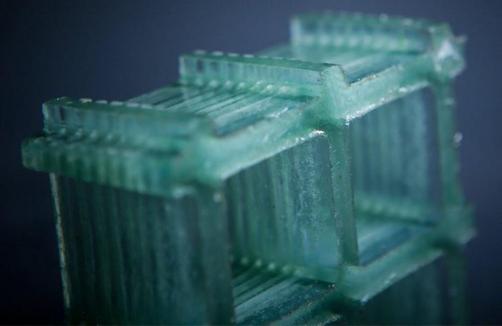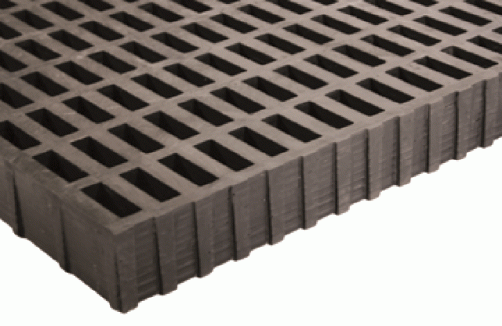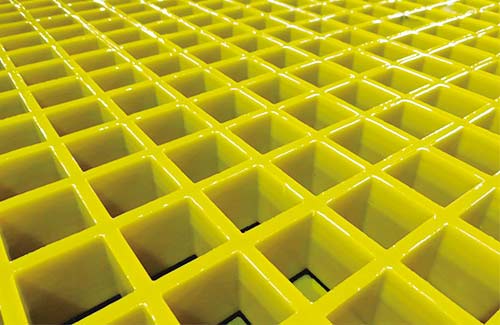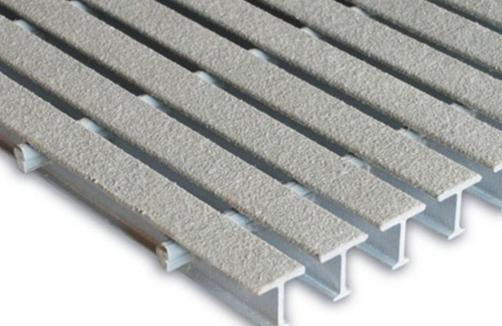FRP grating has gained widespread acceptance in the marine industry due to its exceptional corrosion resistance, lightweight nature, and durability. This paper focuses on the load-bearing capabilities of FRP grating in vessel decks and walkways, providing a comprehensive overview of its performance characteristics and design considerations.
Material Properties of FRP Grating
FRP grating is composed of fiberglass fibers embedded in a resin matrix, typically polyester or vinylester. The combination of these materials results in a composite material with the following properties:
– High Strength-to-Weight Ratio: FRP grating offers excellent strength while maintaining a lightweight structure.
– Corrosion Resistance: It is highly resistant to corrosion from saltwater and chemicals commonly found in marine environments.
– Non-Conductive: FRP grating does not conduct electricity, making it safe for use in electrical applications.
Design Considerations for Load-Bearing Applications
When designing FRP grating for vessel decks and walkways, several factors need to be considered:
1. Load Requirements: The anticipated loads must be determined based on the intended use, such as pedestrian traffic, equipment weight, or vehicle loads.
2. Support Structure: The underlying support structure must be designed to accommodate the loads and ensure the stability of the grating system.
3. Deflection Criteria: Deflection limits are established to ensure that the grating does not deflect excessively under load, which could compromise safety and functionality.
4. Slip Resistance: Slip-resistant surfaces are crucial for walkways to prevent accidents and ensure safe passage.
Testing Methods for Load-Bearing Capabilities
To evaluate the load-bearing capabilities of FRP grating, various testing methods are employed:
1. Static Load Testing: This involves applying a known static load to the grating to determine its maximum capacity.
2. Dynamic Load Testing: Dynamic loads simulate real-world conditions by subjecting the grating to moving loads, such as pedestrians or vehicles.
3. Fatigue Testing: Fatigue testing evaluates the grating’s ability to withstand repeated loading cycles without failure.
4. Environmental Testing: Exposing the grating to different environmental conditions, such as temperature changes and moisture, helps assess its long-term durability.
Real-World Applications
Several real-world applications demonstrate the effectiveness of FRP grating in marine environments:
1. Decking for Offshore Platforms: FRP grating is widely used on offshore platforms where it withstands heavy loads from personnel and equipment while resisting corrosion from saltwater.
2. Walkways on Cruise Ships: Cruise ships utilize FRP grating for walkways, balconies, and decks, ensuring passenger safety and minimizing maintenance.
3. Marine Vessels: Military and commercial vessels incorporate FRP grating in areas requiring high load-bearing capabilities and corrosion resistance, such as engine rooms and cargo decks.
Case Study: FRP Grating in Vessel Decks
Scenario: A naval vessel requires a lightweight, corrosion-resistant material for its deck and walkway areas. The vessel operates in saltwater environments and carries heavy loads from personnel and equipment.
Solution: FRP grating is selected for the deck and walkway areas based on its load-bearing capabilities and resistance to corrosion. The grating is designed to withstand the specified loads, including concentrated loads from equipment and distributed loads from personnel.
Implementation: The FRP grating is fabricated to meet the vessel’s specific dimensions and load requirements. The grating panels are installed with proper supports to ensure structural integrity and minimize deflection.
Outcome: Post-installation testing confirms that the FRP grating meets all load-bearing specifications and performs well in the marine environment. Maintenance is minimal, and the grating remains in good condition even after years of exposure to saltwater and weather elements.
Conclusion
In conclusion, FRP grating offers superior load-bearing capabilities and corrosion resistance, making it an ideal choice for vessel decks and walkways. By considering material properties, design considerations, and testing methods, designers and engineers can ensure that FRP grating meets the stringent requirements of marine environments.







